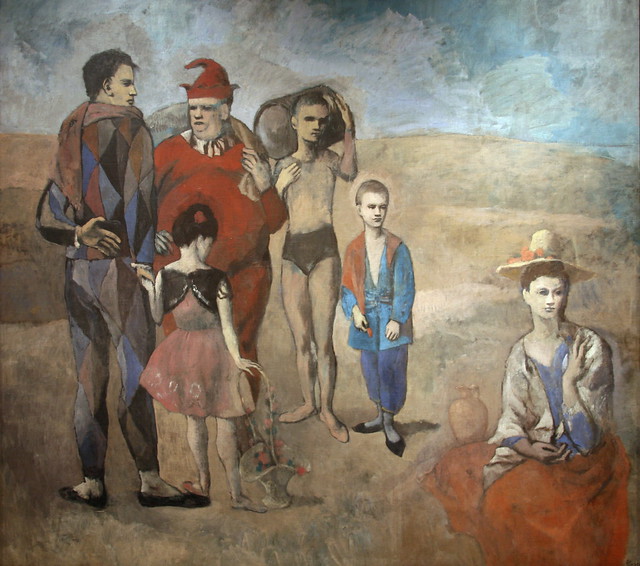In the quasi-apocalyptic gloom of these days, we desperately seek ways to pass the time, to numb our loneliness, to move on. The German filmmaker Wim Wenders, however, provides us with a better alternative: his atemporal and comforting creations do not merely let us escape the present void, but more importantly, they wrap us up in its very beauty.
Wings of Desire (1987), for instance, one of his early works, grants us a unique perspective on what it means to love and be lonely at once. In a world where invisible angels support mortals in bearing their thoughts and cares, being alone means their hand on your back, their head on your shoulder: love and loneliness fuse in these instants of tender touch. Through the speech of his characters, too, Wenders offers us telling insights into the nature of these feelings. “Loneliness is: I am whole at last,” one says, intimately connecting it to love. The words “I am together,” as a result, are no grammatical violation anymore, but powerfully epitomise this intersection between love and loneliness so relevant today.
Wenders also artfully brings the small things that define the human condition to the front of his narrative: “it would be rather nice coming home after a long day to feed the cat, like Philip Marlowe, to have a fever and blackended fingers from the newspaper, to be excited not only by the mind but, at last, by a meal, by the line of a neck by an ear. To lie! Through one’s teeth. As you’re walking, to feel your bones moving along. At last to guess, instead of always knowing. To be able to say “ah” and “oh” and “hey” instead of “yea” and “amen,” says Damiel when explaining his desire to be mortal to his companion angel.
In contrast, other metaphors make us consider being human in terms of humanity as a whole, on its widest scale. The Alekan circus, one of the central stages of the movie, symbolises life, for example. Wenders’ choices here pick up, in an innovative manner, on this universal mirror that is circus, something which artists like Pablo Picasso and Fernand Leger, among others, had understood some decades prior. Another image given significant prominence is that of the bard, Homer: in the body of a tired old man, he is at loss in modern society and yet intent on writing an epic of peace. “Must I give up now? If I do give up, then mankind will lose its storyteller. And if mankind once loses its storyteller, then it will lose its childhood,” he says in thought.

In giving us such a simple yet meaningful lens – the repetition of « when the child was a child…» still rings in my ears – on the small and the universal, Wenders becomes our bard, as it were: he is handing us our precarious childhood, our epic of peace on a film roll ; he brings us back to what truly matters. This is what the protagonists mean when writing « I know now what no angel knows. » Therefore, it becomes almost impossible to leave off watching the film without feeling grateful. And especially in the present circumstances, we must re-learn gratitude.
The movie further lulls us with its poetic character. Watching it is a comparable experience to reading Anne Carson, or Ocean Vuong: there’s almost too much simple, raw beauty to take in. The film’s deliberate slow pace gives us the time to truly absorb these moments in all their flavour. The soft texture of voices and different languages complements this aim: words resound and linger in our heads as we take in the meaning they are escorting. Yet the true poetic signature is Bruno Ganz’ smile, one of the most beautiful and sincere ones I have ever seen. Watching Wings of Desire feels like warmth finding its way through a body.
In this light, it is hardly surprising that Wenders later in his career produced a documentary about and for the German dancer and choreographer Pina Bausch, called Pina (2011). Both artists stemmed from the same generation, and shared values of realistic, beautiful simplicity in their creations. The blend of their work, as a result, is like a stunning breath of fresh air.
Loneliness and its intersection with other core emotions is again at the heart of the message of Pina. “All of her pieces were about love and pain and beauty and sorrow and loneliness,” one of her dancers testifies. In choosing to set many of her creations around the city of Wuppertal, where her dance company was located, she brings out the inevitable singularity of the individual within a vast landscape, most of the time deserted. Simple, vigorous movements become a means to express the joys and pains sheltered within this inherent loneliness. There is a certain cathartic quality to her dances, too: movement implies expression, and expression can imply letting go, which is all we need, really.

In Pina, just as in Wings of Desire, the eyes through which we look – those of both Wenders and Bausch – are child-like, penetrating straight through to the essential emotions of the human condition. These emotions take the form of touching energies emanating from Pina’s creations and are carefully rendered on film: repeated cycles of movement, prominence of the hands, presence of the breath – a general flow. In Café Muller, for instance, the dancers put so much character into their peculiar, compulsive motion that they become potent summaries of societal behaviour. Whenever words are added, it completes the whole with exactitude, as for example this phrase from « Vollmond »: “I am young; my ears hear promises; my mind is power; my eyes see dreams; my thoughts are high, and my body is strong.”
Wenders does Pina’s work full justice in his presentation of it. Not only does he take on the challenge of 3D filming in order to capture the dance in all dimensions, he also sequences them thoughtfully, creating juxtapositions of emotions and lending them further strength. The choreographies, moreover, are punctuated with testimonies of the various dancers in their respective languages. Some of them just look at the camera for a single instant– just enough to bring out their character and respect for Pina. We thus get as all-encompassing a glimpse of Pina’s angelic personality and her genius, as well as Wender’s own.
All in all, these two movies bring out the better sides of loneliness, time and strong emotions, and this is an insight that can soothe and heal us during social isolation. To borrow some words from Wings of Desire, these films can bring back to the center that “feeling of well-being, as if inside of my body a hand was gently closing.”


